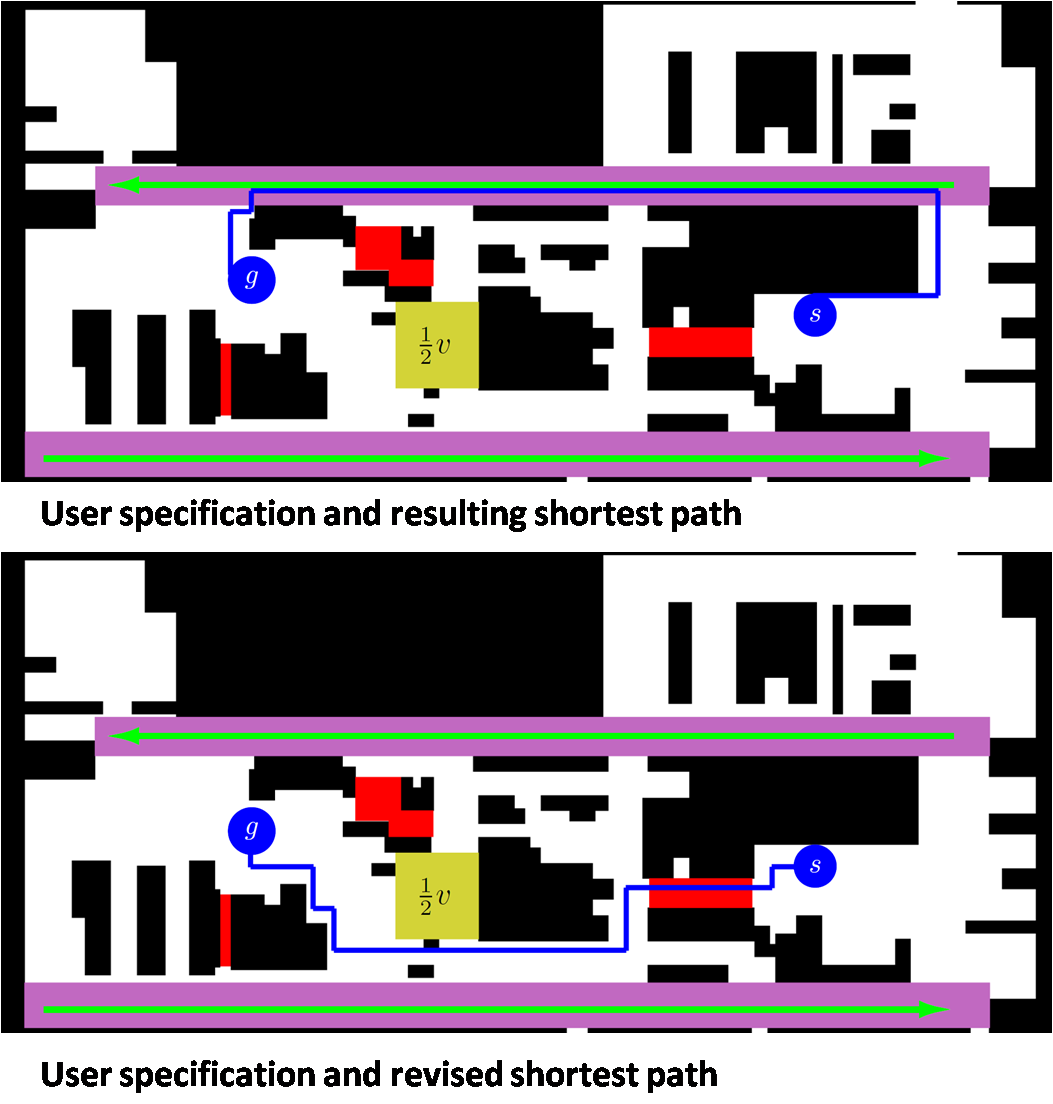
We consider the problem of planning robot motion in a known environment, but where a user has specified additional spatial and temporal constraints on allowable robot motions. To illustrate the impact of the user's constraints on performance, we iteratively present users with alternative solutions. The user provides a ranking of alternate paths, and from this, we learn about the importance of different constraints. This allows for an accessible method for specifying complex robot tasks. Recently we developed a deterministic algorithm that iteratively builds a set of constraints on the relative importance of each user constraint, and prove that with sufficient interaction, the algorithm determines a user-optimal path.
Our work also involves the creation of a ROS-based human-robot-interface that allows users to specify constraints on robot motion in the form of various spatial zones created on top of the environment map and communicates with the learning back-end. In addition to the preliminary simulation results, we work on user studies to evaluate the practical performance of the interface and learning system.